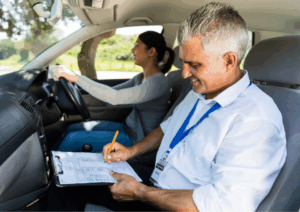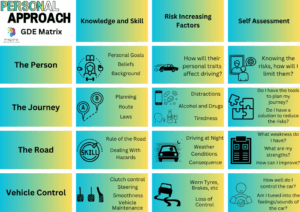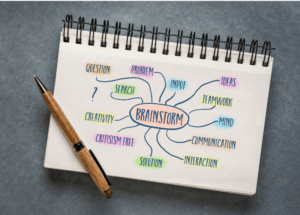How do we truly create safer drivers? It’s a question we returned to in our recent Zoom session, where a group of passionate instructors came together to challenge assumptions, share their experiences, and explore how we can go beyond simply teaching people to pass a test.
If you missed it, here’s a snap shot of what we covered.
The Test is Good – but It’s Not Enough
We kicked off by acknowledging a truth many instructors already feel: the driving test does a decent job of checking basic competence—but it doesn’t prepare learners for the emotional, social, and contextual challenges of real-world driving.
📉 *The numbers don’t lie*:
1,607 people were killed in road collisions in the year to June 2024. 75% of fatalities were male, and the age group most at risk? 17–29-year-olds. These are our pupils. These are the people we’re responsible for.
So what’s missing?
*What the Test Doesn’t Measure*
* *Attitude*
* *Beliefs*
* *Peer pressure*
* *Stress and emotion*
* *Learned behaviours from parents or peers*
As Diana put it beautifully: “The test doesn’t measure the ‘why’ behind someone’s decision to speed, rush, or take risks—it only measures whether they can control the car.”
This is where we come in. We’re in a privileged position. We spend hours beside them, shaping not just skills but values.

The GDE Matrix: Our Secret Weapon
Phil walked us through the GDE Matrix—the framework that takes us from vehicle control (the basics) all the way up to understanding the person behind the wheel.
Here’s how to use it effectively:
- *Vehicle Control* – Yes, they need to handle the car—but also understand risk factors like poor maintenance or bald tyres.
- *Driving in Traffic* – Beyond spotting hazards, are you having honest conversations about driving in the dark? Icy mornings? 20mph zones?
- *Context of the Journey* – Is your pupil rushing because they’re late to a match? Are they carrying friends? What’s their state of mind?
- *The Person* – This is the gold. Their values, their fears, their ego. Get them to reflect: “How do I want others to view me as a driver?”
And always end with *self-assessment*. Reflection is what carries on after they leave our car, It is proven that if you have discussed a plan, then they are more likely to fall back on that when something happens.

Creating Natural Coaching Moments
The magic often lies in the unplanned.
* A football graze becomes a perfect metaphor for blind spots. (The pupil was tackled from her right blind spot on the field)
* A lesson on phone laws becomes a gateway into distraction and legality.
* A pupil’s excitement post-match becomes a conversation about emotional regulation behind the wheel.
These spontaneous reflections often leave the deepest marks—far more than rote learning ever will.

Coaching Techniques That Land
✅ *Use what they care about*
As one member shared, using a photo of a pupil’s children changed everything. It made the lesson personal, emotional, real. Risky? Maybe. But rapport gives you permission to push some boundaries.
✅ *Use real-world scenarios*
Phil’s “Train Station Challenge” is a brilliant one—give your pupil a time-based task with stops and see how they drive under pressure. Then reflect.
✅ *Ask better questions*
“What would your nan say about your driving?”
“What’s your plan when you’re buzzing after a win?”
“Who do you want to feel safe in your car?”
Tools To Support You
Not every conversation flows naturally, and that’s okay. Tools like *The Honest Truth* give structure to those trickier subjects—drink driving, mobile use, seatbelts—and these provide powerful conversation starters through videos, prompt cards, and resources.
We recommend choosing a theme each week or letting the conversation lead naturally:
“I’m tired today”— can lead to “Would you want to watch a short video on that before we head off?”

The PERSONAL approach
This wasn’t just a chat about driving. It was a powerful reminder that we’re shaping *people*, not just pass rates.
Every lesson is an opportunity to challenge, coach, and plant seeds that might one day save a life.
So as we move forward together, let us know what you are doing or what you will change—not just for the test, but to prepare your pupils for life after the L-plates come off.
Want more?
Join us at our next zoom or check out the *GDE Matrix Masterclass* on our website HERE
If you have any questions or reflections? Drop us a message—this work is better when we share it.
